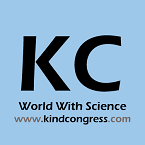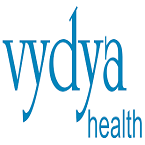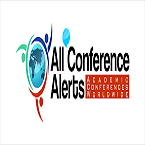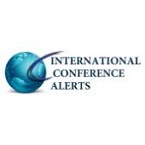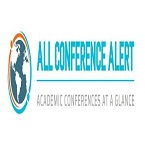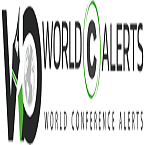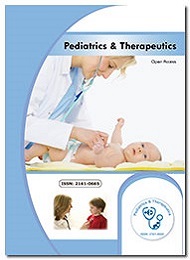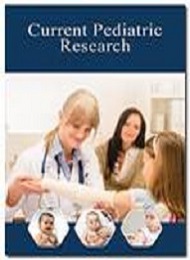Theme: Enlightening the Advancements and Exploring the New Horizons in Pediatrics
Advancedpediatrics-2023
- About Conference
- Sessions/Tracks
- Relevant Conferences
- Advanced Pediatrics Societies & Associations
- Market Analysis
38th International Conference on Advanced Pediatrics and Neonatology, is absolutely delighted to welcome you to join the Conference scheduled on March 20-21, 2023 at Rome, Italy.
Advanced Pediatrics 2023 is an international platform that will discourse recent improvements and revolutions in Pediatrics research and development based on their research and critical reviews, and even some discuss the most recent research and novelties in the fields of Pediatrics, Neonatology and Perinatology, Pediatric Oncology & Hematology, Pediatric Gastroenterology, Pediatric Allergy and Asthma, Pediatric Neurology, Clinical Pediatrics, Pediatric Orthopedics, Pregnancy and Childbirth.
International Pediatric Scientists, Neonatologists, Pediatric Researchers, Pediatric Nurses, Pediatric Associations and Societies, Pediatric Faculty, Pediatric Physicians, Research Scholars, Student Delegates, and Exhibitors from all around the world will be participating at the conference. Oral presentations, poster presentations, keynote talks, workshops, and more will be featured during the conference.
Who can attend?
Pediatric Scientists, Neonatologists, Pediatric Researchers, Pediatric Nurses, Pediatric Associations and Societies, Pediatric Faculty, Pediatric Physicians, Data Management Companies, Training Institutes, Business Entrepreneurs, Manufacturing Medical Devices Companies, Young researchers, Scientists, Young Investigators, Post-Graduate students, Post-doctoral fellows, Trainees, Junior faculty
Why to attend?
European Pediatrics Conference aims to bring together leading academic scientists, researchers and research scholars to exchange and share their experiences and research results on all aspects of Pediatric Conference. It also provides a premier interdisciplinary platform for researchers, practitioners, and educators to present and discuss the most recent innovations, trends, and concerns as well as practical challenges encountered and solutions adopted in the fields of European Pediatrics Conference. Empowering pediatrician professionals to collaborate, Innovate and help to shape the future of Pediatrics.
Purpose of conference?
The purpose of the conference is to provide a platform for pediatrician professionals, Neonatologists Pediatric Researchers , Pediatric Nurses, Pediatric Associations and Societies, Pediatric Faculty, Pediatric Physicians, Presidential candidates, Founders, CEO's, professionals, Scholastic staff, and Experts, Young researchers and talented substitute bunches from universities and research labs to share the latest development in the field of Pediatrics.
Exceptional Benefits includes:
- CME accredited certification
- All accepted abstracts will be published in the conference souvenir & respective journals
- Each abstract will receive a DOI
- Certificate Accreditation by the International Organizing Committee (IOCM)
- All accepted abstracts will be published in the conference souvenir & respective journals
- Global Networking Opportunities
Track 01: Pediatrics
Pediatrics is a field of medicine that is concerned with the health of infants, children and adolescents which includes their growth and development, their opportunity to achieve full potential as adults. The investigation of pediatrics is diminishing the death rates of the infants and the adolescents and besides to control the spreading of sicknesses which are pediatric irresistible maladies which will propel the solid life frame contaminations free life to draw out the issues of youngsters and children. This can be seen that the change of pediatrics is done by knowing the diverse pediatric innate issue fundamental subjects which generally required for pediatrics. The basic treatment which deals in pediatrics is advancing the headway of pediatric prosperity in adolescents and infants.
Track 02: Breastfeeding
Breastfeeding is one among the foundations of Pediatric health, development and survival. It is especially important where diarrhea, pneumonia and under nutrition are common causes of mortality in children under 5 years of age. Breastfeeding also helps to reduce overweight and obesity and protects maternal health in all parts of the world.
Breastfeeding should be initiated within the first hour after birth and that infants should exclusively breastfeed for the first 6 months complementary foods should then be introduced, with continued breastfeeding until 24 months of age or older.
Track 03: Clinical Pediatrics
Clinical Pediatrics is a medical journal that follow to publish and to available information on a change of child-center care topics along with those of a clinical scientific, behavioral, educational, or ethical nature. Clinical Pediatrics allergy is also one of the most important and widely studied areas in novel research of this field. Initial detection of cancer in children also is taking earlier attention in Clinical Pediatrics cancer.
Track 04: Neonatology and Perinatology
Neonatology deals with, prevalently sick or untimely new-born's. Kids with a birth imperfection or is conceived rashly, are treated in the NICUs and helped by a neonatologist amid conveyance and the consideration of the new-born child. A neonatologist tends to unpredictable and high-hazard environment that a general pediatrician may not be very much prepared to deal with it.
Perinatology is a subspecialty of obstetrics concerned with the care of the fetus and complicated, high-risk pregnancies. Perinatology is also known as maternal-fetal medicine. Since the perinatal period, depending on the definition, starts at the 20th to 28th week of gestation and ends 1 to 4 weeks after birth, perinatology logically could be an obstetrical and Pediatric subspecialty but, in practice, it is part of obstetrics. The comparable area of Pediatrics is neonatology. A high-risk baby might be cared for by Perinatologists before birth and by a neonatologist after birth.
Track 05: Pediatric Cardiology
Pediatric Cardiology represents heart diseases in children. It is comprised of congenital and acquired heart diseases. The diagnosis involves effective medical and surgical therapies. Cardiac malformations are one of the major new born birth defects which affect the infant mortality rate. This subtopic is a combined study of surgery such as thoracic surgery and/or vascular surgery and called cardiovascular/cardiothoracic/cardiovascular thoracic surgery.
Track 06: Pediatric Allergy and Infections
Pediatric allergy is a crucial subject to be learned in order to promote knowledge and enhance the treatment of respiration, allergic, and immunologic diseases in youngsters. According to the epidemiologic investigation the common chronic illnesses of children is asthma and allergies as well as many rare diseases and uncommon diseases. Swollen or enlarged adenoids and Tonsils are common in children. The human metapneumo virus is common causes in younger children and infants. The most common allergic reactions occur in kids are atopic dermatitis (eczema), itchiness, runny nose, an asthma attack and sinusitis, Allergy and Asthma.
Children with recurrent cough, wheezing, chest tightness or shortness of breath may have one or more forms of asthma. Left untreated, asthmatic children often have less stamina than other children, or avoid physical activities to prevent coughing or wheezing. Sometimes they will complain that their chest hurts or that they cannot catch their breath. Colds may go straight to their chest. Or, they may cough when sick, particularly at night. Asthma has multiple causes, and it is not uncommon for two or more different causes to be present in one child. Pediatric Asthma is more than wheezing. Coughing, recurrent bronchitis and shortness of breath, especially when exercising, are also ways that asthma appears.
Track 07: COVID-19 in Children
Coronavirus disease 2019 (COVID-19) is an illness caused by the severe acute respiratory syndrome coronavirus 2 (SARS-CoV-2). The incubation period of SARS-CoV-2 appears to be about the same for children as in adults, at 2-14 days with an average of 6 days.
Children infected with SARS-CoV-2 may have many of these non-specific symptoms, only have a few (such as only upper respiratory symptoms or only gastrointestinal symptoms), or maybe asymptomatic. The most common symptoms in children are cough and/or fever. A recent systematic review estimated that 16% of children with SARS-CoV-2 infection are asymptomatic, but evidence suggests that as many as half of pediatric infections may be asymptomatic. The signs and symptoms of COVID-19 in children are similar to those of other infections and noninfectious processes, including influenza, streptococcal pharyngitis, and allergic rhinitis.
As of October 22, 2020, remdesivir, an antiviral agent, was the only drug approved for the treatment of COVID-19. It was indicated for the treatment of COVID-19 disease in hospitalized adults and children aged 12 years and older who weigh at least 40 kg.
Track 08: Pediatric Surgery
Pediatric Surgery is a subspecialty of surgery including the surgery of embryos, babies, kids, teenagers, and youthful grown-ups. Pediatric surgery emerged amidst the twentieth century as the surgical care of birth imperfections required novel procedures and techniques and turned out to be all the more normally based at youngsters' healing facilities. In these sort pediatric surgery distinctive sorts of novel strategies and techniques are most regularly utilized at kids' healing facilities? Sub specialisms of pediatric surgery itself incorporate neonatal surgery and fetal surgery.
Track 09: Pediatrics and Neonatal Intensive Care
New born babies World Health Organization would like intensive medical attention are usually admitted into a special space of the hospital known as the Neonatal medical care Unit (NICU). The NICU combines advanced technology and trained health care professionals to supply specialized take care of the tiniest patients.
Some new born babies would force care in a very ICU, and birth to a sick or neonate will be quite surprising for any parent. Unfamiliar sights, sounds, and equipment in the NICU can be overwhelming. This info is provided to assist you perceive a number of the issues of sick and premature babies.
Track 10: Neonatal and Fetal Nutrition
Nutrition of new born infants, significantly of these born preterm, has advanced considerably in recent years. Extremely preterm infants have high nutrient demands that area unit difficult to fulfill, specified growth faltering is common. Inadequate growth is associated with poor neurodevelopmental outcomes, and although improved early growth is associated with better cognitive outcomes, there might be a trade-off in terms of worse metabolic. Outcomes, though the contribution of early nutrition to those associations isn't established.
Track 11: Congenital Malformations & Birth Complications
Congenital anomalies are necessary causes of kid and childhood deaths, chronic ill health and incapacity. Through the resolution on birth defects of the Sixty-third World Health Assembly (2010), Member States agreed to promote primary prevention and improve Pediatric Health with congenital anomalies by developing and strengthening registration and surveillance systems. Developing expertise and building capacity. Strengthening research and studies on etiologic, diagnosis and prevention promotes international cooperation.
Track 12: Pediatric Vaccines and Immunization
Immunizations are fundamental components of present-day medicine and are essential for worldwide wellbeing. This schedule of prescribed vaccinations may change depending upon where you live, your child’s wellbeing, the type of vaccine, and the availability of vaccines. The prescribed vaccination plan is intended to ensure newborn and children right on time throughout early in life, when they are most vulnerable and before they are exposed to possibly dangerous life-threatening diseases. Vaccines contain debilitated versions of a virus or versions that resemble virus (called antigens). This implies the antigens can't produce the signs or indications of the disease, yet they do stimulate the immune system to make antibodies. These antibodies help ensure you if you are exposed to the virus in the future.
Track 13: Pediatric Neurology
Pediatric Neurology or youngster neurology alludes to a particular branch of pharmaceutical that planning with the conclusion and treatment of neurological conditions in neonates, newborn children, kids, and teenagers. Pediatric Neurology manages the analyze the issue and also treating a wide range of illnesses and disarranges of spinal rope, mind, focal and fringe sensory system, autonomic sensory system muscles and veins that influence people in these age gatherings.
Child Neurology deals with the management and designation of neurologic conditions in neonates, children, infants and adolescents etc., the discipline of child neurology encompasses diseases and disorders of the brain, peripheral system, medulla spinalis, involuntary system and blood vessels that have an effect on people in these age teams. If a child has issues that involve the system, medical specialty specialist has the information to assess, diagnose, coaching and treat the children. The conditions touch upon by medical specialty neurologist's vary significantly, from comparative disorders such as cerebral palsy, spastic paralysis, encephalopathy or a headache through additional advanced and rare conditions neurodegenerative disorders or metabolic disease.
Track 14: Pediatrics Hematology & Oncology
Pediatric hematology is the branch of pediatrics managing the investigation, determination, treatment, and counteractive the action of various kinds of blood issue including the investigation of draining and thickening issues in kids. The investigation of Tumor Cell Biology audits applications worried about flag transduction systems in neoplastic cells, and control of tumor cell phenotype and conduct, and tumor movement. It is critical to think about causes, chance variables, and the speculation in pediatrics with hematology issue. A restorative expert who spends significant time in this field of pediatric hematology is called pediatric hematologist. It is essential that one ought to be comfortable with the instructive and preventive measures keeping in mind the end goal to keep youngsters from being influenced by blood issue.
Pediatric Cancer is not a single disease type, but an large group of diseases that include blood cancers (leukemia and lymphoma), brain tumors and other solid tumors of the organs, bones or soft tissues. While childhood cancer is potentially life-threatening and generally requires rigorous treatment, the majority of pediatric cancers are treatable.
Track 15: Pediatrics Obesity: Analysis and Treatment
Pediatrics Obesity is a condition where abundance muscle to fat quotients adversely influences a youngster's well-being or prosperity. As strategies to choose muscle to fat proportion proportions clearly are troublesome, the determination of weight is regularly in light of BMI. Because of the rising pervasiveness of weight in youngsters and its numerous antagonistic wellbeing impacts it is being perceived as a genuine general wellbeing concern. The term obesity instead of fat is regularly utilized as a part of youngsters as it is less vilifying.
Obesity is a genuine, long haul (incessant) illness. Overweight and weight allude to having excessively muscle to fat ratio ratios. Yet, it's hard to specifically gauge muscle to fat ratio ratios, so a rule called the body mass file (BMI) is utilized to evaluate it. The BMI utilizes the weight and tallness of a youngster to think of an outcome. The outcome is contrasted and models for offspring of a similar sexual orientation between the ages of 2 and 20 years.
Relevant Conferences: Pediatrics Conferences | Advanced Pediatrics 2023 Conferences | Neonatology Conferences | Pediatrics and Neonatology Conferences | Pediatrics Conferences 2023 Rome | Pediatrics Conferences 2023 Italy | Pediatrics Conferences 2023 Europe | Pediatrics Conferences 2023 Middle East | Pediatrics Conferences 2023 Canada | Neonatology Conferences 2023 Japan | Neonatology Conferences 2023 | Advanced Neonatology Conferences 2023
36th World Pediatrics Conference, August 07-08, 2023 Paris, France; 31st International Conference on Clinical Pediatrics, May 22-23, 2023 Berlin, Germany; 35th European Pediatrics Congress , May 17-18, 2023 Amsterdam, Netherlands ; 8th Global Pediatric Ophthalmology Congress , February 13-14, 2023 London, UK ; 37th International Conference on Neonatology and Perinatology, June 12-13, 2023 Edinburgh, Scotland.
Europe: International Society for Social Pediatrics & Child Health, Baltic Association of Paediatric Surgeons Tallinn European Society For Developmental Perinatal & Paediatric Pharmacology, Society of Chiropodists and Podiatrists London, European Society for Paediatric Neurosurgery, Italian Society of Pediatric Rome, Finnish Paediatric Association, Portuguese Society of Pediatrics, Romanian Society of Social Pediatrics, Swedish Pediatric Society, Norwegian Pediatric Association, World Federation of Associations of Pediatric Surgeons, Italian Society of Pediatrics, European Society for Developmental Perinatal & Paediatric Pharmacology, European Academy of Paediatrics, European Society of Pediatric Neonatal Intensive Care, European Pediatric Association, Czech Neonatal Society, European Academy of Pediatric Societies, French Society of Neonatology (Societé Française De Néonatologie), Italian Society of Neonatology (Societá Italiana Di Neonatologia), European School of Perinatal Medicine, Spanish Society of Neonatology (Sociedad Española De Neonatología), Portuguese Neonatal Society, Swiss Society of Neonatology, Neonatal Society (UK)
USA: American Society for Nutrition, American Pediatric Society, National Association of Neonatal Nurses, International Neonatology Association, Academic Pediatric Association, International Society for Neonatal Screening, Children’s Leukemic Research Association New York, American Academy of Paediatrics Washington, Albanian Association of Perinatology, Argentine Society of Neonatology, California Association of Neonatologists, Florida Society of Neonatologists, Ibero-American Society of Neonatology, International Association for Maternal and Neonatal Health (IAMANEH), Chilean Society of Neonatology, Colombian Federation of Perinatology, South eastern Association of Neonatologists (USA), North American Society for Pediatric Gastroenterology, Herpetology and Nutrition, American Pediatric Society Texas City, Asian Society for Pediatric Research (ASPR), Society for Pediatric Pathology (SPP)
Asia Pacific: Asian Pacific Pediatric Association, The Malaysian Pediatric Association Kuala Lumpur, Asian and Oceania Society for Paediatric Radiology, Asian Association of Pediatric Surgeons, The Pacific Association of Pediatric Surgeons, Asian Australasian Society of Neurological Surgeons (AASNS), Asian Surgical Association, Asia Pacific Spine Society (APSS), Japanese Society of Pediatric Cardiology and Cardiac Surgery, Asian Society for Pediatric Research, Philippine Pediatric Society, Asia Pacific Strabismus and Pediatric Ophthalmology Society, International Association of Paediatric Dentistry, Turkish Neonatology Society (Türk Neonatoloji Dernegi), Israel Neonatology Association.
Pediatrics is the branch of medicine dealing with the care of infants, children and adolescents and the prevention and treatment of their diseases. Although most thinking and analysis of health care is taken from the adult health care system, issues surrounding pediatrics are unique and challenging and should be treated differently than adults.
A major challenge the pediatric healthcare community faces is in relation to Medicaid funding. While the cost of health care for most children is relatively low, those who require hospitalization or specialty care experience a tremendous increase in total cost. Additionally, with a focus on preventative medicine, more resources need to be allocated to pediatrics. Medicaid funding for children estimates about 20 percent of total funds, yet children makes up about 60 percent of enrollees. Typically, nursing homes and geriatrics utilize the most Medicaid dollars but for a much smaller population. While healthcare reform is an ongoing issue, the unique needs of children need to be included.
“Pediatricians Market” 2019-2024 report analyzes important features in key developing markets. The analysis contains market size, newest trends, drivers, threats, opportunities, as well as key market segments. The study reveals market dynamics in numerous geographic segments along with Pediatricians market analysis for the current market environment and future development over the forecast period.
The pediatric medical devices market in Europe is expected to grow from US$ 8,253.86 million in 2021 to US$ 13,862.68 million by 2028; it is estimated to register a CAGR of 7.7% from 2021 to 2028. The rest of Europe in pediatric medical devices comprises Switzerland, Netherlands, Ireland, Belgium, Denmark, and others. Increasing demand for advanced healthcare facilities, rising adoption of pediatric medical devices and commercialization of novel interventional solutions are major factors boosting the pediatric medical devices market. With the rising healthcare facilities, the mortality rate among infants, children have rapidly decreased.
Conference Highlights
- Pediatrics
- Breast Feeding
- Clinical Pediatrics
- Neonatology and Perinatology
- Pediatric Cardiology
- Pediatric Allergy and Infections
- COVID-19 in Children
- Pediatric Surgery
- Pediatrics and Neonatal Intensive Care
- Neonatal and Fetal Nutrition
- Congenital Malformations & Birth Complications
- Pediatric Vaccines and Immunisation
- Pediatric Neurology
- Pediatrics Hematology & Oncology
- Pediatrics Obesity: Analysis and Treatment
To share your views and research, please click here to register for the Conference.
To Collaborate Scientific Professionals around the World
| Conference Date | March 20-21, 2023 | ||
| Sponsors & Exhibitors |
|
||
| Speaker Opportunity Closed | Day 1 | ||
| Poster Opportunity Closed | Click Here to View | ||
Useful Links
Special Issues
All accepted abstracts will be published in respective Our International Journals.
Abstracts will be provided with Digital Object Identifier by






